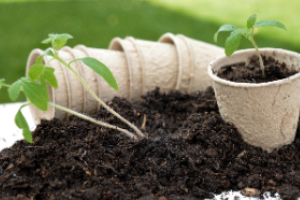Preventing Soil Erosion with Edging
Soil erosion is a common challenge in gardens, particularly on slopes or areas exposed to heavy rainfall. Incorporating weathering steel garden edging provides a durable and attractive solution. These materials stabilise soil and control runoff, protecting plant roots. Adding garden mulch enhances soil retention and supports plant health, also contributing structure and aesthetic appeal to outdoor spaces. With proper planning and installation, this combination can create a low-maintenance landscape that resists the effects of erosion over time.
Understanding the causes of soil erosion is the first step in prevention. Heavy rain, wind, and poor drainage can lead to the displacement of topsoil, affecting plant growth and landscape integrity. Physical barriers and stabilizing surfaces help manage water flow, preventing soil from washing away. Proper landscaping strategies, including the placement of borders and protective coverings, are key to maintaining soil stability.
The Role of Steel Borders
Steel borders are ideal for defining garden beds and holding soil in place. Unlike timber or plastic alternatives, they offer long-term strength and resilience against harsh weather conditions. Their ability to create sharp, clean edges provides control over water runoff, diverting water from exposed soil and reducing erosion risk. Their robust nature ensures they remain effective even on challenging slopes or uneven terrain.
Protective Ground Layers
Covering exposed soil with a protective layer is another crucial step. Organic and mineral layers absorb rainfall impact, slow down water movement, and prevent soil compaction. This protective layer also contributes to nutrient retention, improves soil structure, and supports healthy root systems. By moderating temperature and retaining moisture, it creates a favourable environment for plant growth, enhancing both resilience and visual appeal.
Proper Installation Techniques
Installation practices significantly affect the effectiveness of these methods. Borders should be firmly anchored into the ground to provide firm lateral support. Protective layers should be applied evenly, ensuring complete coverage over the soil and around the edges. Strategically placing these elements along slopes, around plants, and near pathways maximises their ability to prevent erosion while maintaining a tidy, organised landscape.
Design Flexibility
The combination of structural and organic elements allows for flexibility in garden design. Edging can be shaped to follow curves, corners, or irregular layouts, providing precise control over soil and water flow. Protective coverings come in various sizes and textures, allowing for customization to match existing landscaping features. This approach enables both functional benefits and aesthetic harmony, making the garden visually appealing while safeguarding against erosion.
Sustainability Benefits

Sustainable landscaping is another advantage of these materials. Reduced soil displacement preserves nutrients and reduces the need for replacement soil. Durable borders require minimal maintenance and are resistant to decay or warping, while protective layers decompose naturally over time, improving soil health. Together, they provide a long-term, eco-friendly solution for garden stability.
Reinforcing with Plants
Complementing hard and soft landscaping with strategic plantings further reinforces erosion control. Ground covers, shrubs, and perennials anchor soil with their root systems, while the structural elements maintain stability. This layered approach ensures that both natural and artificial components work together to manage water, support vegetation, and prevent soil loss.
Maintenance Tips
Routine maintenance is straightforward. Periodic checks ensure borders remain secure and protective layers are intact. Adding more material where displacement occurs and clearing debris helps maintain efficiency. Minimal effort maintains the integrity of the system, prolonging its lifespan and keeping the garden attractive and functional year-round.
Applications for Larger Projects
These strategies are equally effective in larger landscaping projects, including parks, commercial properties, and community gardens. Their durability allows them to withstand heavy foot traffic, seasonal changes, and extreme weather conditions. Designers can creatively incorporate terraces, raised beds, or defined pathways to achieve a functional yet stylish landscape that resists erosion naturally.
Water Management Benefits
Effective water management is another benefit. By controlling runoff, these techniques ensure moisture is retained where it is most needed, promoting healthier plants and reducing wastage. This is particularly valuable in regions with variable rainfall or drought-prone climates, where conserving topsoil and maintaining consistent plant growth is essential.
Ultimately, preventing soil erosion requires thoughtful planning that combines structural support, protective ground layers, and strategic plantings. Using a strong border and protective soil covering provides reliable control over water and soil movement, ensuring garden stability. When implemented carefully, these methods reduce maintenance, improve plant health, and create a visually cohesive landscape that stands the test of time.
By integrating durable edging, protective surfaces, and vegetation, homeowners can maintain soil integrity, safeguard plantings, and enjoy a thriving garden. Strategic installation, quality materials, and routine care ensure landscapes remain resilient, functional, and aesthetically pleasing for years to come.



